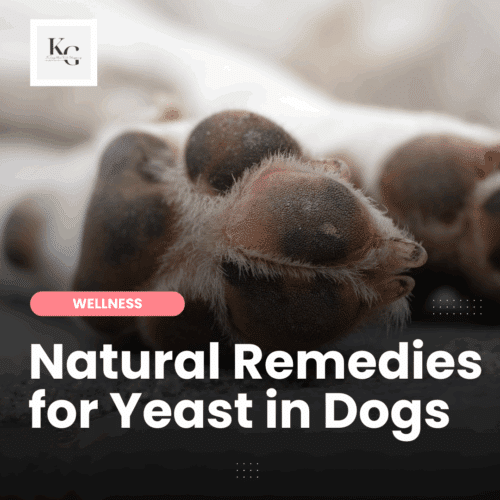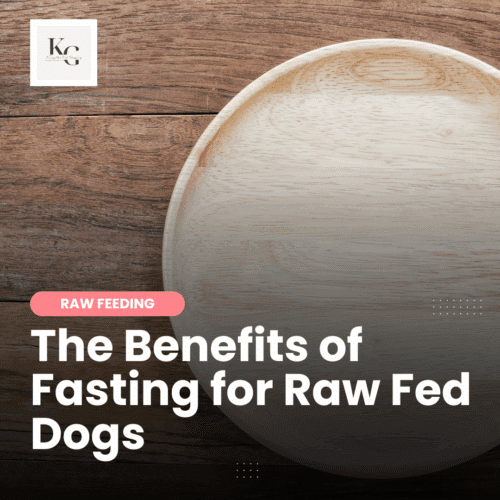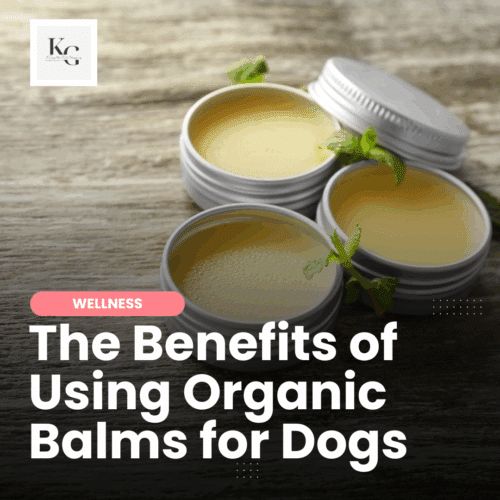Keep the Tail Wagging is supported by pet parents. I occasionally earn a commission (at no additional cost to you) when you click through an affiliate link to one of my favorite products. Thank you for your support. Read More
The Benefit of Oysters for Dogs
I began adding oysters to my dogs’ meals after watching a video. Today, it’s a regular ingredient in my meal prep.
Oysters are highly nutritious and offer several health benefits due to their rich nutrient profile. Here are some of the key nutritional benefits of oysters:
- Protein: Oysters are an excellent source of high-quality protein, essential for building and repairing tissues, supporting immune function, and providing energy.
- Omega-3 Fatty Acids: Oysters are a good source of omega-3 fatty acids, particularly EPA (eicosapentaenoic acid) and DHA (docosahexaenoic acid), which are beneficial for heart health, brain function, and reducing inflammation in the body.
- Vitamins and Minerals: Oysters contain essential nutrients such as zinc, iron, selenium, vitamin B12, vitamin D, copper, and vitamin C. These nutrients are vital in various bodily functions, including immune support, energy production, bone health, and antioxidant protection.
- Zinc: Oysters are one of the best food sources of zinc, a mineral crucial for immune function, wound healing, DNA synthesis, and cell division. Zinc also supports proper growth and development.
- Iron: Oysters are rich in iron, important for oxygen transport in the blood, energy production, and maintaining healthy cells, tissues, and organs.
- Selenium: Oysters are a good source of selenium, an essential mineral with antioxidant properties that help protect cells from damage and support thyroid function.
- Low in Calories and Fat: Oysters are relatively low in calories and fat, making them a nutritious option for those looking to manage their weight or follow a balanced diet.
Incorporating oysters into a dog’s diet can provide various health benefits and contribute to overall well-being due to their nutrient density and diverse essential vitamins and minerals.
Recipe for Homemade Dog Food
I have a base recipe for my meal preps. Forgive me for not providing details – I’m not sharing for others to replicate.
- 80 10 10 blend (beef, turkey, duck, venison, pork)
- Dr. Harvey’s Raw Vibrance base mix
- canned boiled oysters
- organic kelp
Benefits of Zinc for Dogs
While dry dog food brands add zinc and other nutrients back into their food after processing, raw feeders must understand the ingredients in their dogs' meals to ensure zinc is covered. Zinc is good for…
- skin and coat health
- the immune system
- improved wound healing
- mood and behavior
Foods High in Zinc
Several foods are excellent sources of zinc, a vital mineral that plays a crucial role in various bodily functions. Here are some foods that are high in zinc:
- Oysters: Oysters are one of the best food sources of zinc, with some varieties containing exceptionally high levels of this mineral.
- Red Meat: Beef, lamb, and pork are rich sources of zinc, particularly in cuts such as beef shank, lamb shoulder, and pork loin.
- Poultry: Chicken and turkey are good sources of zinc, especially in dark meat portions such as chicken thighs and turkey legs.
- Shellfish: Besides oysters, other shellfish like crab, lobster, and mussels are also high in zinc.
- Nuts and Seeds: Pumpkin seeds, hemp seeds, pine nuts, cashews, and almonds are rich in zinc.
- Dairy Products: Dairy foods like milk, cheese, and yogurt contain zinc, with cheese being a particularly good source.
Including a variety of these zinc-rich foods in your dog's diet can help ensure you meet your dog’s zinc requirements for optimal health and well-being.
You may sigh in relief because you're adding at least one thing from that list to your dog's raw meals. However, some dogs don't absorb enough zinc. In my research, I found that Huskies and Malamutes have trouble absorbing zinc, so more needs to be added to their diet to compensate for this and avoid zinc deficiencies.
How Much Zinc Do Dogs Need?
The recommended daily allowance (RDA) of zinc for dogs can vary based on weight. Here are some general guidelines on how much zinc dogs need daily based on weight:
- Small Dogs (up to 20 lbs): RDA: 10-25 mg of zinc per day
- Medium Dogs (20-50 lbs): RDA: 25-50 mg of zinc per day
- Large Dogs (50-100 lbs): RDA: 50-100 mg of zinc per day
- Giant Dogs (over 100 lbs): RDA: 100-200 mg of zinc per day
It's important to note that these are general guidelines, and the specific zinc requirements for individual dogs may vary based on factors such as age, breed, activity level, and overall health. Additionally, excessive zinc intake can lead to toxicity, so it's essential to provide foods rich in zinc in moderation. I used Animal Diet Formulator software to determine how much zinc I needed to add and confirmed the amount with a canine nutritionist.
Zinc Deficiency in Dogs
Zinc deficiency in dogs can lead to various health issues due to zinc's essential role in their overall well-being. Some common signs of zinc deficiency in dogs include:
- Skin Issues: One of the most common signs of zinc deficiency in dogs is dermatitis, which can present as dry, flaky skin, redness, itching, crusting, and lesions. Dogs with zinc deficiency may have persistent skin problems that do not respond well to conventional treatment.
- Poor Coat Quality: A lack of zinc in the diet can lead to a dull, rough coat with hair loss, thinning, and slow hair regrowth. The coat may also appear brittle and prone to breakage.
- Slow Wound Healing: Zinc is essential for wound healing and tissue repair. Dogs deficient in zinc may experience delayed wound healing, leading to persistent sores, ulcers, and skin infections.
- Decreased Immune Function: Zinc deficiency can weaken the immune system, making dogs more susceptible to infections, allergies, and other health conditions. Recurrent infections or slow recovery from illnesses can indicate a compromised immune response due to zinc deficiency.
- Growth and Development Issues: Puppies with zinc deficiency may exhibit stunted growth, delayed maturation, skeletal abnormalities, and poor weight gain.
- Decreased Appetite: Loss of appetite or reduced food intake can indicate zinc deficiency in dogs, as zinc plays a role in taste and smell perception, which can affect a dog's interest in food.
- Digestive Issues: Dogs with zinc deficiency may experience gastrointestinal problems such as diarrhea, vomiting, and decreased nutrient absorption.
If you suspect your dog may be experiencing symptoms of zinc deficiency, it is important to seek veterinary care for proper diagnosis and treatment. A veterinarian can perform tests to confirm a deficiency and recommend appropriate interventions, such as dietary changes or supplementation, to address the issue and improve your dog's health immediately. You can work with a canine nutritionist to adjust your recipes from there.
Which Oysters Are Safe for Dogs?
If you're sitting there thinking, “Hmm, maybe I'll add oysters to my dog's diet,” then keep reading. While adding oysters is a good idea because they are a great source of zinc and protein, there are some caveats.
Atlantic vs. Pacific Oysters
In general, Atlantic oysters tend to have higher levels of zinc compared to Pacific oysters. Zinc content can vary depending on factors such as the specific species of oyster, growing conditions, and location. However, Atlantic oysters are often considered to have a higher zinc content on average.
Toxins in Oysters
Due to toxins, I don't think buying raw oysters for my dogs is safe. Dinoflagellates, an algae that lives in oysters' muscles, can cause illness in humans and dogs.
I always believed that canned oysters were safer because they're cooked, and any toxins present are long gone (dead). However, there is an illness called paralytic shellfish poisoning (PSP), which is caused by eating shellfish contaminated with dinoflagellate algae, which produce harmful toxins that cannot be cooked or frozen.
Regarding toxicity, both Atlantic and Pacific oysters can contain toxins, mainly if harvested from polluted waters or during certain times of the year when toxin levels may be higher. To ensure safety, it is essential to source oysters from reputable suppliers and consume them within the recommended guidelines for food safety. Proper cooking and handling can also help reduce the risk of potential toxins in oysters.
Regarding toxicity, the key factor is not necessarily whether the oysters are Atlantic or Pacific but rather the quality and safety of the water they are harvested from and the conditions in which they are processed and handled.
Sodium in Canned Oysters
Don't freak out when you see the sodium levels on a can of oysters. Sodium is a necessary nutrient for our dogs (and ourselves). What I want to avoid is too much sodium. Gabriele Joy of Canine Ascension recommends buying oysters in water with under 100 mg of sodium. Avoid smoked oysters or oysters in oil.
I haven’t found canned boiled oysters with low sodium levels, so I prefer to add the oysters to my bulk meal prep instead of splitting a can between my dogs at meal times.
How Much Oysters Do I Add to My Dogs' Diet?
I add two cans of boiled oysters to every 15 lbs of raw dog food (80 10 10 blend). Because I also use a base mix, I can technically skip the oysters and increase the base mix if canned oysters become an issue.
Broiling Oysters Without the Shell for Dogs
Ingredients
- 1 jar of raw oysters – medium oysters are less expensive than small oysters
- 2 tbsp fresh parsley
- 2 tsp of fresh oregano
- or sprinkle dried parsley, dried oregano, and/or dried basil
Directions
- Set oven to 450 degrees F (232.222 C)
- Line oysters on a non-stick baking sheet
- Sprinkle oysters with seasons (dried or fresh)
- Bake oysters for 10 minutes
- Let cool.
- When the oysters are cool, transfer them to a Rubbermaid container and store them in the fridge for a few days or in the freezer.
Rodney & Karen's Recipe for Raw Dog Food
- 2 lbs chicken breasts
- 1.5 lbs chicken wings (calcium)
- 1/2 tsp kelp (iodine)
- 2 cans sardines (Vitamin A / Omega 3)
- 4 oz zucchini (fiber/potassium)
- 2 T Basil (magnesium/iron / Vitamin K)
- 6 oz Beef Liver (Vitamin A / Copper)
- 6 oz Chicken Hearts (Amino Acids)
- 3 oz Blueberries (fiber/antioxidants)
- 1 oz Flax Seeds (ALA)
- 1 oz Pumpkin Seeds (Vitamin E)
- 3 oz Oysters (Zinc)
Feed an 80 lb dog 39 oz per day, roughly.






How much and how many times a week for 80lb Malinois ? Thank you
Glad to have the reference to check on oysters. Thanks.
Regarding ‘toxins’, I distinguish a toxin contaminant in food from our oceans (such as heavy metals and pesticides) from the multiple possible biological parasite/virus, plus single-celled algae/bacteria organisms (and some of the compounds they produce). Though most of the biological organisms (and their byproducts) may be destroyed/inactivated ‘dead’ with cooking, the toxins generally are not. Something to be aware of in all our food sources.
Glad to help! …and FYI, 1 oyster has about 7 mg zinc 😉
Thanks, Sandy!!!
I use the NRC requirements. Daily zinc for a 33 lb dogs is 15mg. Commercial raw is usually deficient in Zinc (by around half), Manganese (33 lb dog 1.2 mg) and Magnesium (33 lb dog 150 mg), but other deficiencies will vary based on which proteins are rotated through and which secondary ingredients are used. There is a formula (and chart) to calculate NRC requirements by dog weight. Here is a link for the requirements for a 33 lb dog. http://dels.nas.edu/resources/static-assets/banr/miscellaneous/dog_nutrition_final_fix.pdf
I spoke with someone else who shared a link where we can find the right zinc balance our dogs should get so I’m going to check that out and update this post. I’ll be adding oysters to my dogs’ diet – picking some up this weekend.
Great article. I’ve been wondering about zinc lately and asking myself, “How do I know if Poppy is getting enough zinc?” Your list of foods rich in zinc came at a perfect time. I couldn’t get the volume to play on Dr. Becker and Rodney’s video on my computer, so will try on my tablet. Thanks for printing the recipe too! I’ve never bought oysters before, so I have a new task this week!